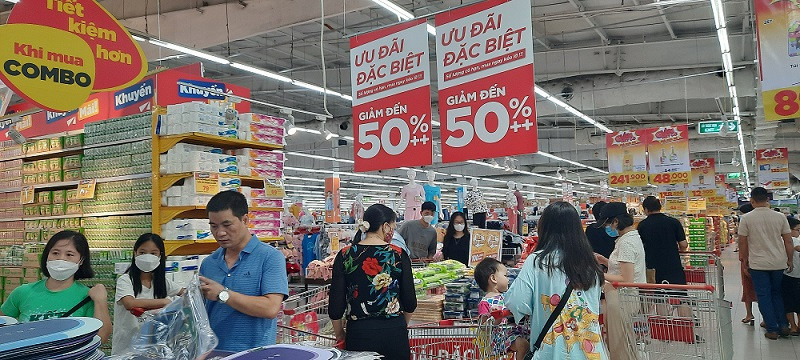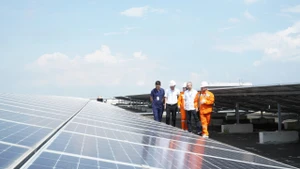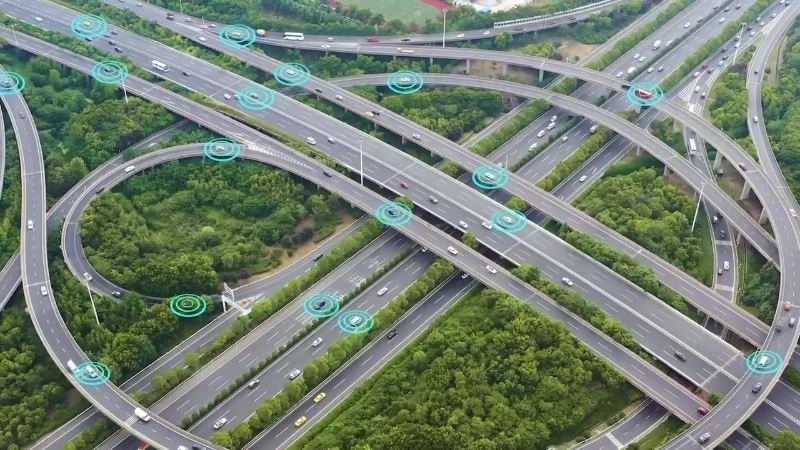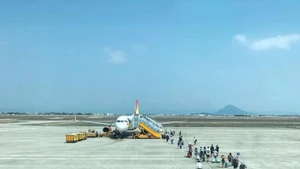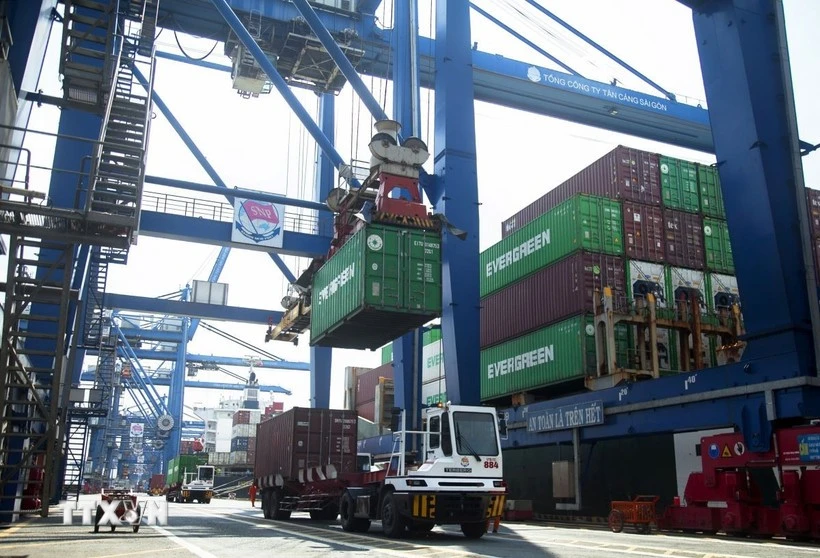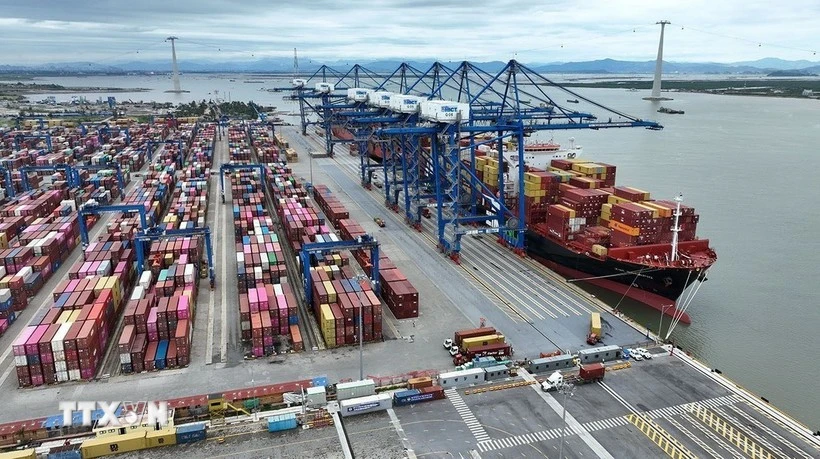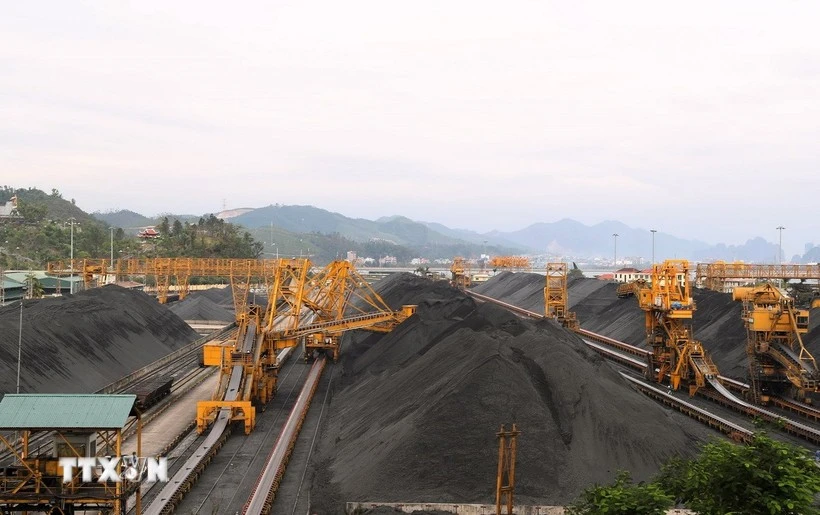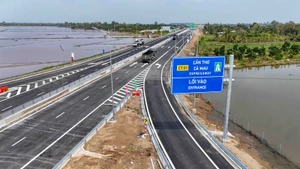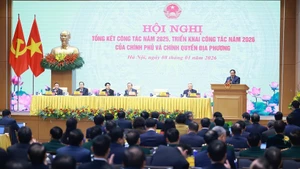The General Statistics Office (GSO) last week reported that Vietnam’s consumer price index (CPI) for the entire 2022 increased by 3.15% year-on-year, lower than the expected rate of about 4% year-on-year.
“This has mirrored the government’s big efforts in controlling inflation amid strong fluctuations and uncertainties in the global market,” said GSO general director Nguyen Thi Huong. “The Vietnamese economy has recovered in 2022. A surge in production demand to serve consumption and exports, in addition to soaring global commodity prices, has fuelled prices of goods and essential services, but prices are basically still under control.”
The success in controlling inflation is a major highlight in the country’s socioeconomic development picture in 2022, especially in the context of big fluctuations in the prices of fuel greatly affecting the performance of production and business activities.
Fuel price fluctuations
In 2022, the government has done a good job in regulating fuel prices which can have spill-over impacts on the prices of many other items in the market.
The date of January 3 also saw the prices of fuel in the domestic market increased slightly, at about 1.3 US cents per littre, but still not have a significant impact on the general prices in the market.
So far this year, the petrol price has undergone 34 price revisions including 18 increases and 15 reductions, and one kept unchanged. This has led to an increase of 28.01% from a year earlier, while gas prices were up 11.49%.
In 2022, Vietnam is reported to have spent as much as 8.5 billion USD importing assorted fuel, up 20% in volume and 19% in price, as compared to the corresponding period last year.
The import markets largely include the Republic of Korea (2.88 million tonnes – up 98.9%), Singapore (1.32 million – up 15.3%).
In Vietnam, the selling fuel prices are implemented under the market mechanism under the state’s regulation and in line with the world’s fuel prices and the nation’s socioeconomic situation in each specific period, said Decree No.83/2014/ND-CP released in 2014 on petrol and oil trading.
Nguyen Hoai Nam, deputy general secretary of the Vietnam Association of Seafood Exporters and Producers, said that the spiralling hike in fuel price has increased costs for the fishery sector.
“For example, each of dozens of thousands of fishing vessels has suffered a 20-30% rise in operational costs including fuel, ice, freshwater, and foodstuff. Total costs for each trip offshore for each vessel is about 13,000 USD. Thus the increase in fuel price has led to the total costs of 16,900 USD per ship,” Nam said. “Many vessels have had to halt operations”
“Moreover, the fuel price hike has also led to a big climb in transportation costs of 15-20%. Since 2020, this type of cost from Vietnam to Florida has increased from 4,000 to 18,000 USD in Q1 2022 and down to 16,400 USD per container,” Nam said. “If the taxes and fees of fuel are reduced, it would be great news for enterprises. The state should support enterprises and people via reduction of these taxes and fees so that they can recover performance, with the state being able to collect more revenue from taxes paid by enterprises. This will help the economy ensure its desired economic growth.”
International praise
A number of international organisations, which have their own calculation methods, have highly valued Vietnam’s efforts to control inflation.
“The State Bank of Vietnam (SBV) has successfully maintained an accommodative but flexible monetary policy to facilitate low-cost financing to help support the economic recovery while containing inflation,” said the Asian Development Bank (ADB). “Vietnam’s prudent monetary policy and effective price controls of gasoline, electricity, food, health care, and education should keep inflation in check at 3.8% in 2022 and 4% in 2023.”
The ADB said that increasing investment, controlled inflation, and accommodative monetary and fiscal conditions are expected to drive domestic consumption, boosting 2022’s economic recovery.
The ADB also noted that risks to Vietnam’s economic outlook remain elevated. “The global economic slowdown could weigh more heavily on exports than forecast, which would worsen the current account balance. Although aggressive interest hikes by the central banks of major economies have helped dampen global price pressures, an intensification of global geopolitical uncertainties could push up commodity prices, worsening inflation in Vietnam.”
What is more, the International Monetary Fund (IMF) has also projected that the country’s inflation rate would be 3.8% in 2022 and around 4% in 2023.
According to the IMF, Vietnam’s inflation pressure has been mostly limited to some goods like fuels and related services like transport. Consumers are largely insulated from the global surge in food prices because of ample domestic supplies, pork prices declining from last year’s peak, and a preference for rice, which remains cheaper than other grains like wheat. Further, price gains for services, such as health and education, have also been very mild.
New goal
In anticipation of risks, the National Assembly (NA) has set a CPI growth target of about 4.5% in 2023, with some solutions noted.
“In 2023, it is quite necessary to keep close watch over the developments of the domestic market, and the global and regional markets, prices, and inflation in order to timely detect risks and advance suitable measures,” read the NA’s Resolution on the Plan for Socioeconomic Development in 2023 adopted in November 2022.
“There must be synchronous and flexible in monitoring, with the close combination between the fiscal and monetary policies and other macro policies so as to control inflation, contributing to macroeconomic stability and supporting economic recovery,” the resolution stated. “It is also a must to strengthen the financial and banking system’ resilience and stability in all situations with a view to closely controlling inflation, while also taking the initiative in actively applying such tools as interest rate and exchange rate in a manner appropriate for the country’s socioeconomic situation.”
SBV Deputy Governor Dao Minh Tu said that the SBV it will flexibly manage monetary policy to control inflation at 4.5% in 2023 as targeted by the NA. This is aimed to “stabilise the monetary and foreign exchange markets to ensure the safety of the banking system.”
Updating banks’ lending, he said that loan supplies by Vietnamese banks rose 12.87% as of December 21 from the end of last year to more than 11,780 trillion VND (499.3 billion USD).
The current lending rates are about 0.81 percentage points higher than those at the end of 2021, which is low in comparison to regional and worldwide increases.
Tu also revealed that non-performing loans in the banking system inn 2022 were now brought under control, and that the current ratio was about 1.92%. By late 2022, the Vietnamese dong has depreciated as much as 3.81% against the USD from the end of 2021, which is much lower than many other currencies worldwide.
A month ago, the SBV increased its credit growth cap for the economy’s banking system by 1.5-2 percentage points to 15.5-16%. The SBV said that credit institutions with better liquidity and lower lending rates would see their credit expansion limit raised.
GSO general director Huong said that so as to actively cope with surging inflationary pressure, the government has requested ministries, sectors, and localities to issue many timely policies and implement concerted solutions to minimise adverse impacts on socio-economic development.
Proper policies and drastic moves in governance have remarkably helped subdue pressure on prices and stabilise production and business activities and people’s life, Huong said.
However, while commenting on Vietnam’s inflation, analysts at the Economist Intelligence Unit have also said, “We forecast that consumer price inflation will accelerate to an annual average of 3.2% in 2023 but will record a declining trend in the second half of the year to about 2% by end-2023. The softening of consumer prices will be driven by a declining trend in global oil prices next year.”
Global analysts FocusEconomics is also expecting Vietnam’s inflation rate to average 3.7% in 2023, and 3.4% in 2024.
